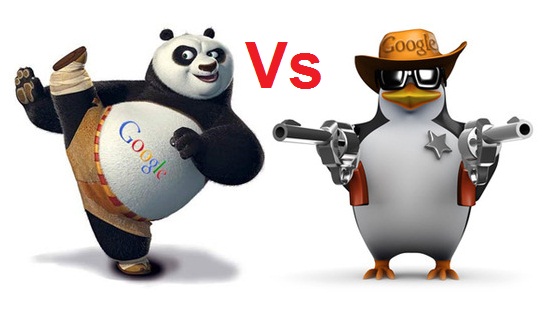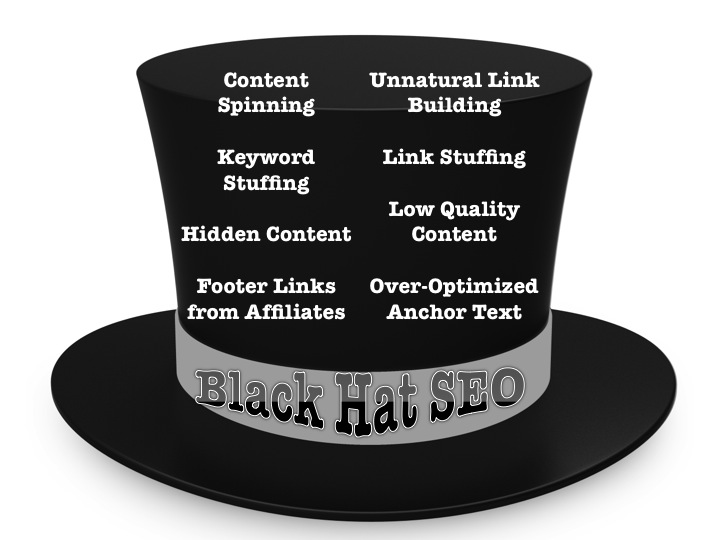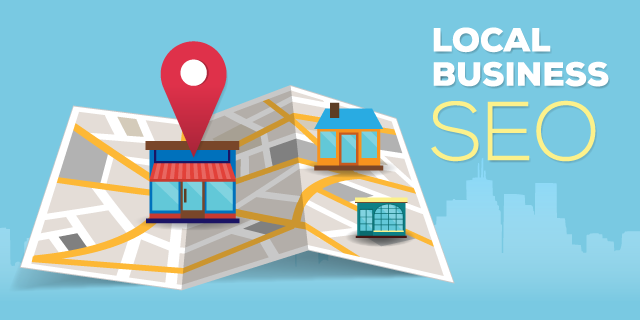There are certain events in life that stress you out for good, like clowns for instance (Stephen King has outdone himself with its IT masterpiece) or old ladies offering you sweets (Grimm’s Hansel and Gretel tale surely has left a vivid trace in each kid’s memory, permanently affecting its unconditional love for candies). Sometimes the origin of a phobia is really hard to trace especially if it is related to sweet and nonthreatening at first sight characters like a cute panda or a penguin, for instance.
However, for online marketers and Internet savvy business owners, Panda and Penguin stand for Google algorithm updates that can bury their business or raze their competitors to the ground. It is said that in order to overcome their fear people should understand the very nature of its source, i.e. they should examine what Panda and Penguin actually stand for. So let’s see who’s the scariest: Panda or Penguin:
Panda
The Panda Update is all about onsite content. It has first rolled out in 23 February 2011 and its latest version Panda 4.0 was officially announced on 20 May 2014. Even if Panda update is said to be a monthly event with a 10 day duration period it still has some major impacts that are particularly visible to the online community, the last update being a proper example of this. Panda’s effectiveness varies greatly throughout different languages, for instance Panda 4.0 affects 7.5% of English queries.
Interesting enough is that even if a small portion of your website pages are deemed to render duplicate or low quality content, your whole website might suffer a harsh fate.

Credits to Bruce Bennett @ PhotoBucket
What Panda targets:
- Low quality content – as Google explains, websites that do not offer original content don’t bring anything new to the table. Thus the Panda algorithm makes sure that websites that use spun or otherwise copy&pasted content are filtered from the search results. Whether you “borrow” content from online articles or you use the same content for several pages on your own site – the duplicate content will cost you.
- Thin content – being lazy to make your website descriptive is another risk you would not like to take. Offering scarce information to your audience equals to having nothing valuable to offer, at least according to Google.
- Over-optimized content – sometimes in pursuit of high rankings people could indulge in rather eccentric tendencies like stuffing single page content with countless mentions of the desired key phrase. This could not only damage the meaningful smooth line of thought that the content follows but would definitely harm the entire user experience.
- A high percentage of ads above the fold – online users are looking for actual useful content and if after stopping by your website the first thing they see is a massive attack of ads, they might not end up scrolling down to actually reach that content of yours. (Panda update was aimed at detecting this kind of content “misrepresentation”, however given that it somewhat failed to address properly such cases an additional update – the page layout algorithm was released that focused on excessive ads usage above the fold only.)
- High bounce rate and small amount of time spend on the site could be a secondary signal that will hint for offering poor content and no value to the website visitors.
How to protect your business from Panda:
- Create original content. Forget about copying and pasting, don’t compile other people’s online posts and articles and then publish them on your website. Take time and start from scratch, write your own texts for each page on your site. When choosing a freelance writer make sure to test his work. Lower paid gigs will mean low quality work – if your budget is tight you should proofread and verify the uniqueness of the submitted material.
- Create longer that 150-200 word on-page content. Fuel your most important pages with long comprehensive unique texts. The longer the texts the better … and the higher the chance your page will rank for a wider set of key phrases.
- Don’t keyword-stuff your content – let your work be balanced, use synonyms and topic relevant/often mentioned phrases instead of repeating a single keyword over and over again. In this regard consider learning a bit more about the semantic principles of the search process.
- Let your content be seen – if people are stopping by a given page on your website, they are looking for the content you have promised to disclose there – do not deny them the chance to check it out. Bombarding them with ads will repulse them. Be careful with the ads vs content ratio above the fold.
How scary Panda really is:
Panda penalties could be harsh. Panda could easily wipe you out of the SERPs even if you have 1,500 word texts on each of your service and main pages. If the content is not unique even 3,000 word articles won’t save you.
To be honest it is not difficult to understand whether you have been hit by Panda update. If you know what your pages are made of you’d be well aware of whether you are on the right track or you are facing the risk to be hit by Panda. If you are insisting on using non-original content your penalty removal will be hard to get. However in case you are willing to rewrite (and that is really rewrite) your website, than the rescue is at arm reach and there is nothing to fear really. You have three options to handle pages with duplicate or thin content noindex them (hide them from Google’s index as not to get penalized), remove them, rewrite them.
Penguin
The Penguin Update is after your inbound links. Given that links remain one of the strongest ranking factors, they are most closely examined by Google and monitored for being a result of manipulative tactics aiming at artificially boosting rankings and website traffic. On 24 February 2012 the first Penguin rolled out. The most recent officially announced Penguin update is known to be the fifth release or the so-called Penguin 2.1 from October 4, 2013.

Credits to The Hollywood News
What Penguin targets:
- Paid links or advertorials – if you are trying to buy your way to the top positions in Google’s search result pages you should be willing to pay a hefty price. The “all or nothing” gambling strategy would eventually make your site a target of algorithmic penalty, so be careful with getting yourself paid backlinks.
- Link exchanges – the request “link to me and I’ll link back” is a death trap.
- Unnatural link building efforts – these are all kinds of link schemes including using automated software for inbound link generation.
- High number of site-wide links – blogroll links are one type of such “untrusted” link manipulation. This unnatural referral from each page of a given website is not tolerated by Google, so be careful with websites that could expose you to such a risk.
- Low quality inbound links – these include backlinks from low quality sites, websites that have been already penalized or such that are involved in spammy tactics as perceived by Google.
- Domain diversity –
- Exact match anchor text – overoptimizing your anchor text is an outdated tactic and you should leave it in the past if you are to remain competitive in today’s online environment.
- Footer links and forum comment links that pass page rank – enough of those, the low hanging fruit might be tempting, but you should work harder to enjoy constructive results.
How to protect your business from Penguin:
- Don’t offer money for link juice.
- Regularly examine your link profile – watch for warning signals and be careful to remove any risky referrals and association with low quality site.
- Be careful with guest posting – Google is on alert as it comes to the guest posting spam. Select websites with high authority and with regular float of in-house content or you’d be walking on thin ice. And of course submit valuable unique content – as you would for your own website.
- Assess your referral prospects before you make your outreach or before you accept them mentioning your website.
- In case you are unable to remove bad links from your website profile, use Google’s Disavow tool. Disavow websites on a domain level in order to avoid site-wide links from the given referee.
How scary Penguin really is:
The real threat behind the Penguin update is that analyzing the link profile of a mature website might be quite painstaking. Imagine going over thousands of links and not having a clear definition of what a good and bad link really is. There is also a challenge in tracking down and contacting all the webmasters managing the referring websites. Sometimes those will not respond at all or they might demand a fee for their removal “service”.
Getting a Penguin penalty could be scary because it will require time and efforts to deal with the issue. But on top of that it will require experience and knowledge – two qualities that many website owners lack and thus the higher the fear of getting hit by Penguin.
So to sum it all up both Panda and Penguin are algorithm updates, which are the lesser evil as compared to dealing with a manual penalty – now those are the scariest ones. In the game of rankings Panda and Penguin both hide a risk and a certain potential: the uncultured fear them, the experienced value the opportunity they bring for getting rid of unfair competition



